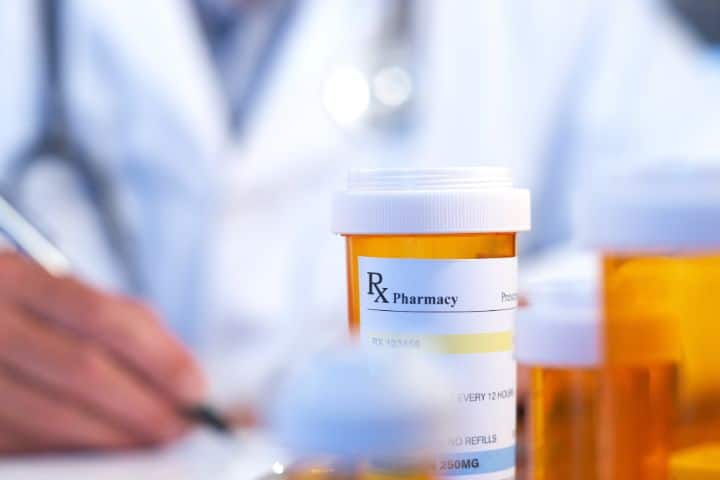The word “cancer” doesn’t carry a positive connotation, and so, when a person is diagnosed with breast cancer, she may not have any idea of what lies ahead of her.
The only thing one may think about is why it happened to them. They want to get rid of the cancerous cells from their bodies.
As the news sinks in, the doctor may propose various treatment options, including the possibility of mastectomy if the individual’s health condition permits it. It is the time when the person and the family start thinking about all other logistical details.
While there is an immediate focus on pre-surgery logistics, one may also need to think about what she would need post-mastectomy. Considering this is not a routine surgery, most patients may not have much idea about this surgery.
This article will help prospective patients and their families manage the transition from the operation theatre to the regular daily routine.
Prescriptions and Oral Medication
It is always helpful if the patient knows the effect of this surgery on an individual’s daily tasks. Post-mastectomy, the patient may experience different types and amount of pain or discomfort.
One may have to assess her level of discomfort and take medication strictly prescribed by the surgeon. You should take your pain medication before the pain is too severe.
In general, the surgeon may prescribe narcotic drugs such as Vicodin for the management of moderate pain. One should take medication for pain when she experiences the pain on a regular schedule.
Depending on the individual’s condition and doctor’s advice, one may also add or replace the narcotic drug with Ibuprofen variants such as Advil or Tylenol.
As a patient, you notify your doctor of any particular drug allergies, reactions, or medical conditions that may hamper your healing with these drugs.
Every patient is different, so if the medicines prescribed to you to decrease your pain is not working, let your doctor know, and she will alter the prescription. Your healing and recovery shall improve over time with adequate pain control.
When on a narcotic drug, you must avoid alcoholic drinks. Also, these drugs can influence your bowel movement. So, you should increase your liquid intake, eat high-fiber foods, and take short walks at regular intervals.
Also, during the surgical procedure, you may have had a tube down your throat to assist you breathe. It can often cause a sore throat for a few days following the surgical procedure.
If the sore throat continues, you may take throat lozenges, throat-numbing spray, tea with honey, or a popsicle. All of these are useful therapies to soothe your throat.
You may also like Must Haves After Breast Augmentation
Incision and Dressing Care
Most of the time, nowadays, surgeons use dissolvable stitches below your incision (cut) and many strips of narrow surgical tape to cover your incision. Known as steri-strips, these are small white strips of surgical tape protected by a gauze dressing and tape or a plastic dressing.
Post-surgery, you may feel a lot of discomforts OR even itching, but you should not try to remove your dressings until your healthcare professional recommends it OR at least for the first 48 hours after surgery.
In case your surgeon has wrapped a tensor bandage around your chest during your recovery. She may tell you to keep the same for 48 hours atleast.
You should also keep the narrow strips of surgical tape for ten days minimum following your surgery. Your doctor or a nurse will remove the bandage and sutures (stitches) in about ten days.
In case you had dissolvable stitches, these would dissolve on their own. If the dressing or steri-strips come off, you shall call the nurse or the doctor for advice instead of attempting to replace them.
Jackson-Pratt (JP) drain
Your doctor may have also put a plastic tube from under the skin to outside your body with a bulb attached to it. It is called the Jackson-Pratt (JP) drain. Your doctor or a nurse will demonstrate to you how to empty your drain.
You will have to empty the drain two to three times per day or when the bulb is full. You may need drainage cups to keep track of how much fluid is draining every few hours. Although your doctor may provide you with these, you may also buy them from a pharmacist if she does not.
Hearing about drains attached to your body may make you think about how you will hide your drains. For that, you may purchase a jacket with inside pockets.

Another thing that may help the draining easier is a set of large safety pins. These are helpful if you need to pin your drains to your shirt or jacket.
You may also like Best Mastectomy Swimsuits
Taking Shower
If your surgeon has put a plastic dressing on you, you may shower one day after the drain is out. In other cases, you may shower after 48 hours of surgery once the doctor or a nurse removes your dressings. You may also buy a 4×4 gauze, which can be used to protect your scars and your drain areas.
For showering, it is good to have a Drain lanyard. You will require this lanyard to ensure that you can shower without much worry about the drains dangling from your body.

Besides, after the surgical procedure, you may experience great weakness. So, to make taking a shower safer, you may buy a shower seat. It would allow you to sit in the shower and relax.

You may also like What to Wear After a Single Mastectomy?
Comfortable Resting and Sleeping
Your post-procedure recovery largely depends on the rest you can give to your body. So, you are encouraged to have the right set of equipment to make you comfortable while resting or sleeping. These things will expedite the healing process after your surgery.
The first thing in this regard is the Mastectomy pillow. Many of the patients we know have highly recommended this pillow. It goes underneath the arms and over the breast area to protect your incisions.

In addition to the mastectomy pillow, a wedge pillow may make resting on a couch or a bed much more manageable and comfortable. It is essential because your chest will feel very heavy during the healing process, and a wedge pillow provides excellent comfort during that time.

During the early days, you may not be able to button your regular bra. A front closure bra with wide compression can help alleviate that concern. A compression bra may also help reduce swelling. However, please get your surgeon’s opinion on this before you start using it.

You may also have a set of cotton camis with a built-in bra. They can be extremely comfortable and relaxing in comparison to the regular bra.

If you feel intense pain, you may also use an icepack to help reduce discomfort and swelling around the operated area.
Activity
You must avoid strenuous activities, heavy lifting, and any vigorous exercises until your surgeon or the nurse removes your stitches or confirms they are dissolved. It will help if you share with your healthcare provider your daily routine. Accordingly, she can make a personal plan for you, including what you can do and when after surgery.
To keep you active, you may start walking right away as per your comfort. However, you must not do house chores or driving until the drain is out. Driving is particularly hazardous because of the narcotics drugs you are taking. Narcotics impair your driving skills, and therefore it is safe to drive only when your doctor has asked you to stop taking those drugs.
Following a lymph node dissection, you may still use your arm, but you must avoid physical exercise until you have completed your first post-procedure visit to the doctor.
Your surgeon or a nurse may recommend you a few standard exercises to regain movement and flexibility. Your healthcare provider may also refer you to a physical therapist if your health condition requires it.
While many women return to work within three to six weeks, it may vary with the pace of your recovery, your type of work, your overall health, and personal preferences. It would be best if you discuss your plan of returning to work with your healthcare provider.
Dietary routine
You may be able to consume food as soon as you can take liquids after recovering from anesthesia. In your diet, it is a good idea to have plenty of fruits and vegetables while keeping your overall diet low-fat. Your doctor may suggest a specific diet plan as per your lifestyle so that you can follow it without enormous discomfort.
One most important thing that experts recommend during your recovering days post-mastectomy is to have at least ten glasses of water and non-caffeinated beverages like fruit juices. They keep you hydrated and help you maintain your bowel movements.
You may also like Best Bras For Mastectomy
Emergency help
Although nowadays, mastectomy surgery has become far more standard than earlier, you may still face situations you may not know how to deal with. To take of those situations, you must keep the contact number and their contact hours handy.
So that if you observe any of the following symptoms, you may contact your surgeon or your family doctor:
- Your incision has swollen, become reddish, or causing unbearable pain.
- You are running a high fever with a temperature of more than 100 degrees Fahrenheit for over 24 hours post-surgery.
- You are having unusual drainage of fluid.
- You are bleeding a lot (“soaked” bandage) from where you had your surgery.
- Your hand or arm has turned red and become painful, indicating an infection that may require antibiotics treatment.
In any of these circumstances, you should call your healthcare provider if it is happening during their work hours. If it is outside their work hours, you should also keep a contact number for emergency assistance.
While all these steps may not alleviate all your pain, you have to go through post-mastectomy; having a clear idea of what to expect and when may help a lot in getting mental peace.




